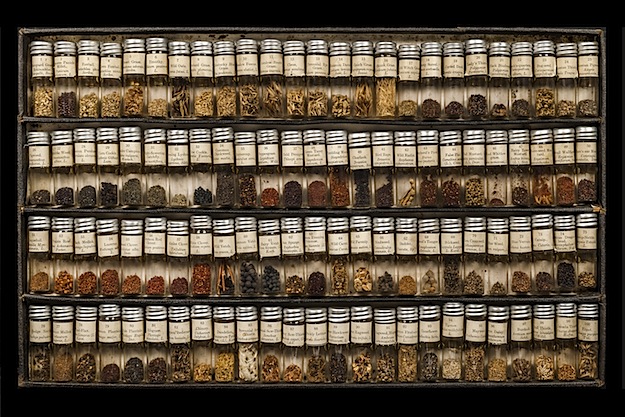21 May 100 bottles of seeds on the wall
The late Harry Piers served as curator of the Nova Scotia Museum from 1900 and 1939. He was also Keeper of the Public Records, a position now known as Public Archivist. In these capacities, Piers received and cataloged hundreds of Nova Scotia animal, fossil, plant, and mineral specimens—along with a few crime scene photos.
Piers meticulously recorded each donation, listing its source, date, and location, together with significant details in a series of accession ledgers. Owing to their fragile condition, these records have been largely unavailable for the last half century, but the museum and the archives have recently collaborated on a project to digitize them, giving researchers ready access to the Piers Accession Ledgers.
 The two institutions are celebrating the achievement with an online exhibit highlighting 60 of their favorite Harry Piers artifacts. They also produced a short YouTube video about Piers.
The two institutions are celebrating the achievement with an online exhibit highlighting 60 of their favorite Harry Piers artifacts. They also produced a short YouTube video about Piers.
Those with a strong stomach may want to begin with images of the barquentine Herbert Fuller, scene of a triple murder described in this July 21, 1896 New York Times dispatch from Halifax.
The Public Archives of Nova Scotia has made great use of digital technology and social media to gain wider exposure for its collections [e.g.: here]. Unfortunately for those wanting to view online artifacts at higher resolutions, the archives employs an unwieldy Adobe Flash viewer that can only zoom into frustratingly small fragments. The effect is like viewing a large painting through a small-diameter tube. An upgrade to HTML-5 imagery is planned, and that should be a big improvement.
In the meantime, the two institutions have kindly granted Contrarian permission to reproduce a full-sized version of my favorite image from the 60 displays, a 1906 reference collection of 100 “economic seeds (useful and noxious plants) of Canada,” prepared by George H. Clark, Seed Commissioner of Canada, and made available to “seed merchants and agricultural institutions” for $2.
You’ll find everything from Hare’s Ear Mustard and Russian Pigweed to Prickly Lettuce and Cow Cockle, each in its own glass vial, capped with an aluminum screw-top, neatly labeled in English and Latin, and secured to the cardboard display by a brass spring clamp.
The image at right shows just one of the vials, containing the blue-grey seeds of common vetch. [Click here to view the whole imagine at this resolution.]
There is something about the variety of shapes, colors, and sizes of plant seeds that captures a naturalist’s fancy—the miniaturization of nature’s infinitely complex blueprint, perhaps, or the magical potential of spring growth.
Do check out the full Piers exhibit for yourself.
[Place-marker here for future discussion] The civil servants responsible for husbanding Nova Scotia’s voluminous documentary and photographic records responded promptly and courteously to my request for an extra large version of this image, and I am grateful to them.
However, antiquated traditions have saddled these officials with a command-and-control approach to record access, complete with application forms, contracts, fees, Crown copyright, etc. This is an artifact of a bygone era, when such resources were precious and scarce. The world has moved on to an economy of abundance in digital and print resources, and the provincial government needs to adjust.

